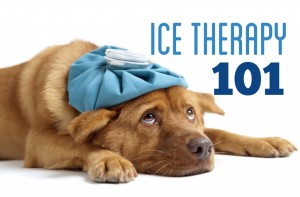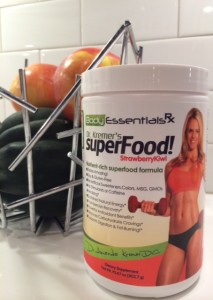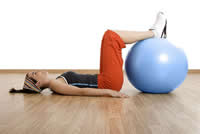Can You Treat Whiplash at Home?
As effective as chiropractic care is in helping the body heal from a whiplash injury, what you do at home and at

Macgyver can’t fix this one, but you sure can help yourself!
work between visits will be just as important as your chiropractic care itself. Because tissues injured in a whiplash trauma are easily re-injured, you can suffer numerous set-backs in your recovery if you do not take proper care of yourself.
In this article you will learn the most important aspects of self-care, such as limiting some of your normal daily activities that are stressful to injured tissues, when to apply heat to an injured area and when to use ice, when to use physical therapy modalities, as well as the proper way to exercise and stretch to help your tissues heal.
Activities of Daily Living
Unfortunately, the nature and severity of whiplash injuries necessitate making some lifestyle changes to allow your

We’re tired just watching this guy!
body to heal properly. Activities that are too repetitive, too intense or involve too much bending or twisting will stress your injured muscles and connective tissues and dramatically increase your recovery time.
As we discussed in the last couple of chapters, each person’s injury and treatment plan will be unique, based on the factors such as physical condition, age, severity of the accident, and so forth. Because of this, there is no one specific set of lifestyle changes that is optimal for everyone. You and your chiropractor will have to determine the specifics about how you should modify your daily activities. There are a number of general rules, however, that are helpful for just about everyone who is recovering from a whiplash injury.
Get plenty of rest. Your body requires additional rest in order to heal. Be sure you get at least eight hours of uninterrupted sleep each night: ten would be even better. Whenever possible, take a short nap during the day, or at least find some quiet time where you can breathe deeply and relax. Be sure to limit the amount of time you spend sitting or standing in one position. If you work at a desk, take a five minute break every hour to stand up and move around. If you stand at work, be sure to take a five minute break every hour to sit or lie down. Taking short, frequent breaks like this throughout the day will dramatically reduce the stress on your neck and back.
It is very important to limit any activities that require repetitive use of your ripper body, such as vacuuming, reaching or repetitive assembly line work. Repetitive activities are very stressful on injured soft tissues and can dramatically slow your rate of recovery. Avoid lifting objects that weigh more than ten pounds; including heavy grocery bags, pulling large weeds in your garden, carrying heavy purses or suitcases, and carrying young children.
When in Doubt, Use Ice
The easiest rule of thumb to remember about when to put heat on a part of your body that is sore or inflamed is 
“NEVER!” The problem with heat is that, while it does make the sore area feel better in the short term, it increases the amount of inflammation, ultimately leading to more pain, a longer period of recovery and the development of additional scarring and fibrotic tissue in the muscles. There are times when it is very useful, but only under very specific circumstances. This is one area where you should rely on the advice of your chiropractor.
Ice, on the other hand, is a much better therapy to use at home. It doesn’t feel as pleasant to sit with an ice pack on your neck as it does to sit with a hot pack, but ice will do wonders for decreasing the amount of inflammation in injured tissues, while decreasing pain. The rule of thumb for using ice packs is to apply the pack to the area you want to treat for fifteen minutes each hour and to keep at least one thin layer of material between the ice pack and your skin.
Nutritional Supplements to Speed Recovery
There is an old saying that “You are what you eat.” This is especially true when it comes to your diet following a whiplash
injury. The food and nutrients that you consume are your body’s only source of material with which to repair your injuries, and any nutritional deficiency will result in delayed or incomplete healing, Since the demand for specific nutrients goes up considerably when you are recovering from an injury, it is especially important to make sure that you supplement your diet with these. In most cases, the best way to get these additional nutrients is to take a good quality, high-potency multivitamin.
Zinc
Zinc is the most deficient mineral in the American diet. The reason for this is the recent absence of zinc in the food supply, coupled with au increase in sugar consumption that increases the body’s need for zinc. Zinc is critical for the function of over 200 enzymes in the body. Many of these enzymes are necessary for healing. Supplementing with additional zinc will ensure that all of your enzymes can do their job to repair damaged tissues.
B-Vitamins
The B-vitamins are necessary for energy production in all of your body’s cells. When the demand for energy production goes up, as in the case of recovering from an injury, the need for additional B-vitamins goes up as well.
Antioxidants
Soft tissue injuries cause the formation of damaging free radicals. Free radicals are oxygen-containing chemicals that react with the tissues in your body. When these chemicals come into contact with individual cells, they transfer their oxygen to the cell membrane, which damages the cell membrane and leads to the death of the cell. Following a whiplash injury the body becomes flooded with these damaging free radicals, and if they are not neutralized by antioxidants they will further damage your injured tissues. The most important antioxidants are vitamins C, E and beta-carotene (a form of vitamin A), as well as the mineral Selenium. Supplementing with these vitamins following an injury will help minimize the damage that the oxidizing free radicals cause.
Herbs, Minerals and Amino Acids
There are many other herbs, minerals and amino acids that can help your body heal quicker and more completely, such as bromelain, copper, magnesium, calcium, lysine, tryptophan, glutamine, arginine, and others. Your chiropractor can help you decide which of these will be the most beneficial to you.
Home Stretches and Exercises
As you read in the previous chapter, stretching is a very important activity that you can do at home to help your 
muscles and other soft tissues heal properly. That is, as long as you stretch properly. Stretching your muscles too hard, bouncing while holding a stretch or stretching your muscles when they are too cold can injure your muscles and lead to a worsening in your flexibility, rather than an improvement. Proper stretching technique is easy, provided you follow a few simple rules. We already discussed these in a previous article, but we want to reiterate them here again, in case you skipped that one:
The first rule is to never stretch your muscles too hard. You should only stretch to the point where you can feel a mild pull on the muscle. If you attempt to stretch further, you may cause small muscle tears and a reflex tightening of the muscle. When this happens, it can lead to muscle scarring and counteract the benefits that stretching provides.
The second rule is to never bounce while stretching. When you bounce, you momentarily force your muscles to stretch further than they should, resulting in the same overstretching effects just mentioned.
The third rule is to only stretch your muscles when they are warmed up. Years ago, it was taught that you should stretch before you exercise, but recent research has found that you should stretch only after your muscles have been fully warmed up. Muscles are a lot like plastic. If you heat plastic, you can bend it and stretch it without it breaking. However, if you try to bend or stretch the same piece of plastic when it is cold, it will break. When your muscles are warm, they can be stretched without undue strain. But if you try to stretch your muscles when they are cold, you can injure them by causing small tears in the muscle tissue. For this reason, it is important to stretch your muscles only after you have warmed them up with some gentle exercise.
Whereas stretching helps improve the flexibility and range of motion in your muscles and connective tissues, the goal of therapeutic exercise is to restore normal strength and coordination. As an added benefit, exercise stimulates the release of endorphins, which help decrease stress and pain, as well as growth hormone, which stimulates the healing of connective tissues and muscle. Whether you decide to do your exercises at home or at a health club is personal preference. The important thing is to start slow and build up. Begin with low-intensity exercises and slowly increase the intensity over a period of weeks or months. This will allow your body to experience the benefit of exercise, while minimizing your risk of re-injury.
On this site, you will find several exercises and stretches that you can do at home to help speed your recovery from
whiplash. We encourage you to talk to your chiropractor before starting any exercise or stretching program to ensure that the activities will not stress your muscles and soft tissues.
If you haven’t yet found a great chiropractor to work with, that is highly skilled in this area, consider having a look at one of our top choice chiropractors near you – we’ve personally hand selected one in your city!
